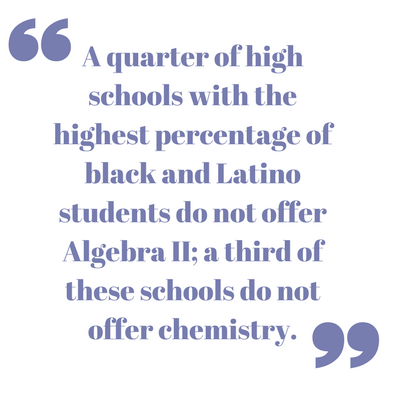The Calculus on Course Access: Part 1
Laura Slay, CEAM Executive Director
Missouri is poised for improvements to education policy over the next four years. Those improvements promise to both deliver quality education and encourage greater accountability. Solutions to K-12 education challenges can be found in bipartisan policies that benefit students and will usher in a new era for child-centered policies. One such that draws diverse education stakeholders together is called Course Access. Just this week Missouri’s new governor, Eric Greitens, proposed expanding Course Access programs to address educational inequity in our state.
Course Access provides K-12 students with access to courses that are not offered by some public schools. Students enroll in qualifying in-person, online or blended learning courses in neighboring traditional districts, through local community colleges or via online courses. Students may also earn industry certification for workforce training that is not offered through their district or charter school. Full credit is given upon course completion.
The cost for access courses is covered by the home district’s per pupil state funding. Conversely, public schools who offer Course Access can charge students from other districts; thereby benefitting both schools and students. About a dozen states have passed some form of Course Access policies, which vary from state to state.
Course Access policies can be especially helpful in financially challenged charter schools and districts that cannot afford to hire teachers for all curriculum areas such as AP courses, computer science, physics, calculus, foreign languages or in vocational course areas such as welding.
According to The U.S. Department of Education Office of Civil Rights Data Snapshot: College and Career Readiness report (March 2014), the findings are quite alarming and seem to make a strong case for state implementation of a high quality Course Access program. Here are a few of the findings.
Course access make academic, financial and practical sense. With vast disparities in access to courses that many would deem essential to a young person’s ability to achieve his or her potential, combined with the opportunity for fiscally challenged schools to pool their resources and offer courses across district lines, Course Access should be considered a crucial education reform measure.
CEAM recognizes the potential that Course Access can offer, especially to rural, urban, charter and any resource challenged school. A close assessment of Course Access programs in other states will inform Missouri’s proposed Course Access legislation and the establishment of a set of related best practices.
« Previous Post: CEAM Response to State Board of Education Vote
» Next Post: Education Savings Accounts- How do they work?

